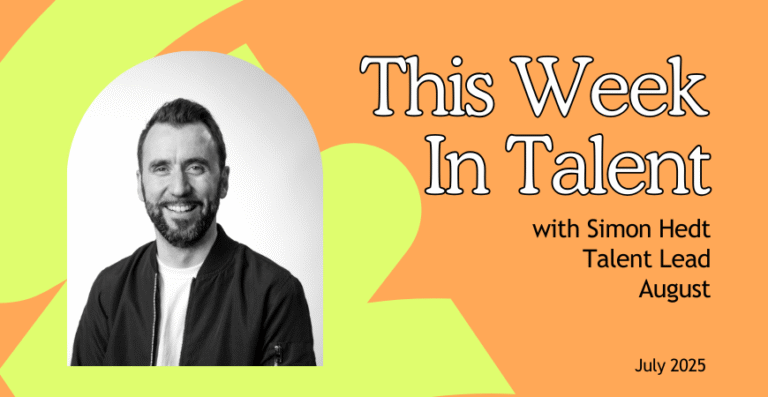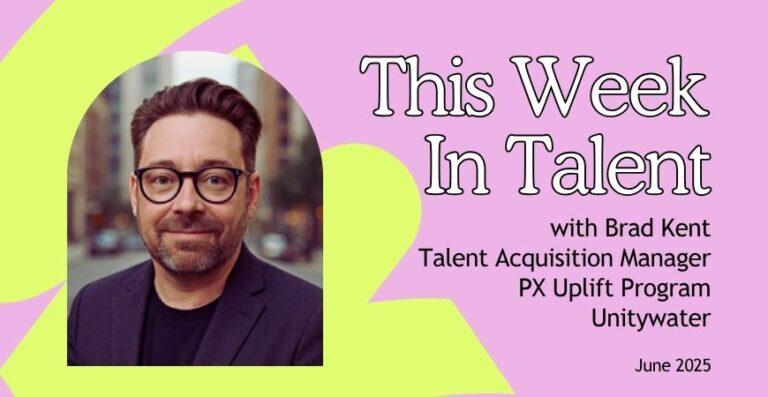Looking for a TA career change but not too sure how to get there? Our ‘So you wanna be a…‘ series takes a look at some of the more niche TA roles and digs deep into the who, how, and why behind them. We chat with some of your favourite TA leaders in that space to find out how they got started, what their role really looks like, and what tips and tricks they have for other TA superstars looking to get a foot in the door.
In this issue, we sat down with Dinar Oceanny Thalieb, Global Onboarding Program Lead @ Canva, to find out what really goes on in the life of an Onboarding Manager.
What led you to become an onboarding manager?
I’ve been working across the Learning and Development and People Experience space for almost 8 years, and in my opinion, onboarding is one of the most exciting and impactful experiences for any employee.
Being a Newbie (our affectionate term for new starters at Canva) is a memorable time for everyone. Imagine, after completing several rounds of interviews, you’ve finally landed the job that you’ve worked so hard for. As you sign your new job offer, you feel anxious yet excited to start a new chapter in your career. The first welcome you receive is through onboarding, and the onboarding experience kicks off your new chapter. We’ve all been in this position, and for me, being able to intentionally design a journey for Newbies that sets them up for success is something that I find to be so fulfilling.
As I was exploring the next step in my career, I was eager to find a role that would allow me to deep dive into creating magical and impactful peak moments for new hires – which led me to my current role at Canva, a global visual communication platform.
What does your day-to-day involve? What about the bigger picture work?
There’s never a dull day at Canva, and that is what I love about it. We’ve welcomed more than 700 Canvanauts to the team this year with more hires on the way.
Setting crazy big goals and making them happen is at the heart of how we work at Canva. In defining the ‘bigger picture’, it’s important that we identify a mission that is inspiring to the team while also linking back to the company’s overall vision and mission – which is to empower the world to design. For onboarding, it is to ensure that our Newbies experience the magic of what makes Canva special regardless of where they are in the world. We envision a program that can help propel our Canvanauts to do the best work of their lives while growing and thriving at Canva.
In order to achieve this mission of ours, day-to-day the team will focus on smaller goals and milestones that brings us a step closer to our ideal state. Hence, there’s never a dull moment! We can be working on iterating the current process in onboarding, adding new improvements to our global program, or refining our strategy based on new incoming data. One day is never the same.
Canva is known to have a great onboarding process – can you elaborate on how your team has developed certain processes?
I’m lucky to work with such an amazing and knowledgeable team at Canva. Everyone that I’ve met is so passionate and talented. We take an iterative process in our work including our current onboarding program. There’s always room to improve and we do this through regularly monitoring feedback and data that comes in from our Newbies, consulting with internal stakeholders that are involved in onboarding (such as Talent Acquisition, People Operations, Vibe, etc), and continuously aligning our processes with broader company-wide priorities.
What are some of the biggest blockers/challenges you come across in your everyday work?
Some of the biggest challenges I face are likely common challenges that most teams also experience. We often have a grand vision of what an ideal onboarding experience looks like, but we can’t tackle everything all at once. So resourcing is vital to manage when introducing major changes.
Educating Hiring Stakeholders on the importance of onboarding can also be a challenge. A well-structured onboarding experience is proven to increase retention and engagement, but often many managers (we call them Coaches at Canva) will focus on getting new hires to immediately work on tasks at the expense of onboarding. That’s why I believe when designing onboarding, you can’t only take into account the needs of Newbies, but also must understand the coach’s priorities and point of view as well.
What do you love most about your job?
My favourite part about my job is when I get to do discovery work and uncover untapped user (or Newbies in our case) needs. I then take those insights and transform them into a strategy for our onboarding program. It’s so exciting to be able to craft a narrative or design a journey that every Newbie will have to go through. Knowing that my work is having a tangible impact is so rewarding and motivating for me.
I also love the opportunity to interact with a wide variety of stakeholders across Canva. It’s really exciting to work with different teams across different geographies and understand their needs and how I can support them.
What type of qualities do you think make a good onboarding manager?
Being a champion for People Experience is really important. Onboarding has evolved and we’ve moved away from a ‘traditional’ training or skill transfer approach to a focus on employee experience and sustaining peak moments throughout the employee lifecycle. We no longer have the traditional, bulky manual that is given to Newbies on their first day. Instead, onboarding consists of various personalised touch points for Newbies – from the moment they sign their contract up to the time they complete their probationary period. Understanding the principles of employee experience or people experience is critical for an onboarding manager as it allows you to create a program that is reflective of your user needs. And your users are not only new employees. They are also the hiring stakeholders or workplace buddies that guide our Newbies throughout their onboarding journey. Which comes to the next important quality to have – stakeholder management. Onboarding does not sit exclusively with L&D teams but instead is a product of close and efficient collaboration between various teams across the People department. This includes Talent Acquisition which is responsible for the candidate recruitment experience, People Operations which helps set up employee systems, Tech Support which prepares relevant IT assets for newbies, to our Vibe team who provides them with thoughtful swag to welcome them to Canva. Being an onboarding manager requires collaboration with all these teams to ensure that our Newbies experience a seamless and consistent experience throughout.
The last two years have been tough for anyone working in the people space. How (if at all) has a pandemic, frequent lockdowns, and a move towards people wanting more hybrid work options impacted the type of work you are doing right now?
I feel like the pandemic has accelerated all the changes that organisations were talking about making. It gave us that push towards designing experiences that are in line with what the future of work looks like. I don’t think we’ll ever go back to traditional onboarding where Newbies are given a bulky manual and are required to sit in a full-day classroom session. The restrictions that were put in place made us think outside the box to find ways to make onboarding engaging. And now that we have a bank of knowledge for what worked and what didn’t over the past two years, it’s empowered us to become bolder in our experimentation and to iterate even more.
And lastly, for those of us who aren’t onboarding managers, what’s your top onboarding tip?
My top tip for having a successful onboarding experience is about having the right mindset and to prioritise building connections and relationships over shipping goals.
New hires who have the best experience are the ones that focus on adapting to the company’s values and culture. Often it can take a bit of ‘unlearning’ of what we know to adjust to the company’s way of doing things.
Prioritising building connections is also extremely important. I see many Newbies come in eager and wanting to immediately dive into work without allowing themselves to properly absorb the culture and existing context. At Canva, we have Listening Tours that all Newbies are required to participate in. For these Listening Tours, Newbies reach out to a handful of stakeholders that they’ll be working closely with, introduce themselves, and ask any questions that they may have about life at Canva. The key here is to listen and observe. You’re only a Newbie once, so it’s important to enjoy the process of getting to know your fellow Canvanauts.
Dinar’s Cheat Sheet for Aspiring Onboarding Managers
What are some of the actionable things you can do if you want to be an Onboarding Manager? Here are some suggestions from Dinar of who to follow, what to use, and where to seek out your info.
Industry experts and influencers to follow
I follow Josh Bersin for insights in people analytics and Dave Ulrich for talent, organisational design and leadership. Onboarding is part of a wider field of People Experience, so I find it useful to learn from experts outside of the onboarding field.
Absolute must-use productivity and tech tools to make your life so much easier
Canva is my go-to tool for visual communications, and I’ve been an avid Canva user long before I started working there. Working in distributed teams across different time zones, Canva’s talking presentation feature has been game-changing in delivering engaging asynchronous decks. I also use Canva Whiteboards a lot when it comes to remote brainstorming.
Other tools that I use include Trello for keeping project work on track, Focus Plant which is a pomodoro timer app that helps me distance myself from distractions, and Headspace for their focus music.
Newsletter and event recommendations to keep the brain ticking over and your network fresh?
I subscribe to Offbeat Works, a curated newsletter created by L&D professionals that keeps me across the latest L&D tools, thinking, and topics.
Is there a specific niche area of recruitment you’d like to know more about. Email us and let us know.









